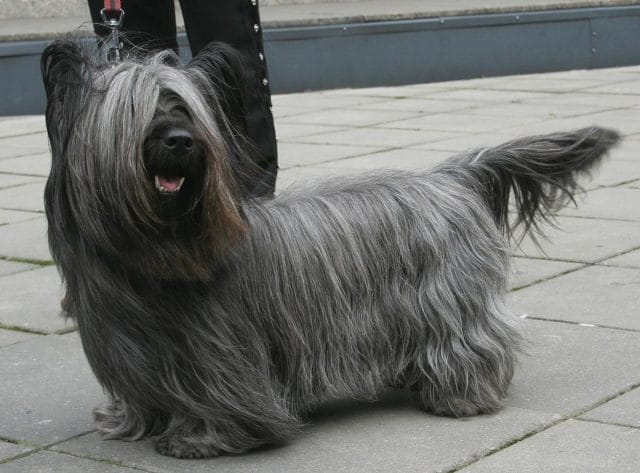Meet the Skye terrier. Named after the Scottish Isle of Skye, he’s one of the oldest terriers in the world — with a lineage tracing back to the Middle Ages. He’s also been a very popular dog in his day. Queen Victoria kept several as pets starting a fashion trend. Mary, Queen of Scots kept one, which hid under her skirt at her execution. Famously loyal, “plucky but dignified”, and an important cultural icon, this is the kind of dog people erect statues of. In fact, they have.
Want one? Better act fast: the breed could go extinct in your lifetime.
Skye terrier breeders are doing their best to change the tide, but things don’t look good. The global population is between 3,500 and 4,000, making the once-common breed one of the rarest in the world. Skye terriers are rarer than red pandas. In the UK, there were only 17 puppies of the Skye terrier breed registered in 2013. Breeders say they need 300 births a year to maintain a healthy population and avoid complications from inbreeding.
How did this happen?
For most of human/canine history, dog breeds evolved gradually, alongside human society, to fill different functional roles as they were needed. If a society or economy shifted, and the role was no longer needed, the breed ceased to exist. Those dogs were either bred for a different purpose or were subsumed into the general dog population. That’s what happened to this little guy:
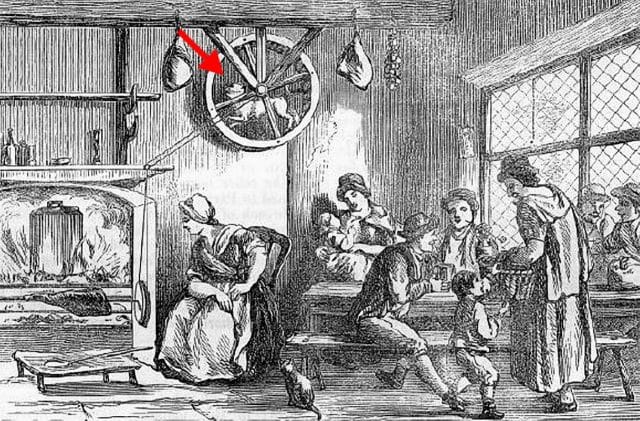
The forces governing today’s “dog economy” are far stranger and more capricious. We live in a world of post-functional dog breeds. Even the best dogs out there might face extinction within our lifetimes. If, that is, they’re unlucky enough to fall out of fashion.
What’s in a Dog?

In order to understand how a breed can go extinct, first we need to get into what a breed is. And in order to get into that, we need to get into what a dog is.
According to the fossil record, the canine was first domesticated between 11,000 and 32,000 years ago. One theory is that ancient humans trapped the pups of ancient wolves, raised them as pets, and used them to hunt. This theory is known as the “hunter hypothesis.”
Another popular theory is known as the “scavenger hypothesis.” From an expert opinion in National Geographic:
Most likely, it was wolves that approached us, not the other way around, probably while they were scavenging around garbage dumps on the edge of human settlements. The wolves that were bold but aggressive would have been killed by humans, and so only the ones that were bold and friendly would have been tolerated.
In either hypothesis — hunter or scavenger — wolves found themselves among humans. In such an environment, a wolf did best if he had certain traits: tameness, obedience, and a general tendency to treat humans as neither predators nor food. Ancient humans had food and shelter to share with the kinder wolves, and weapons and cunning to fight the more aggressive ones.
As consequence, those boldest and friendliest wolves flourished, procreated, and begat later generations.

Adorable wolf puppies
Why did this result in labrador retrievers rather than just really sweet wolves? For one, in addition to selecting for behavior, humans almost certainly favored tame or cute looking animals over vicious looking ones. For another, the ancient canines had to adapt to their new human environment in more ways than one — for example, their diet changed, which favored different physical traits.
On top of this, it seems that some physical or cosmetic traits are genetically linked to tameness. One of the most famous experiments in the domestication of wild animals is domestication of the silver fox, a project launched by Russian biologist Dmitri Belyaev in 1959.
The experiment began with 130 silver foxes — a species farm-raised for their fur, but not yet domesticated. At the time when it wasn’t clear whether a wild species could be domesticated at all within a lifetime. Belyaev set about breeding them, selecting for only one trait: the animal’s tolerance or affinity for human touch.
The experiment went on for decades, and was carried on after Belyaev’s death by Lyudmila Trut. Many of those decades took place behind the Iron Curtain. The experiment was not well known outside Russia until Trut published an article in American Scientist in 1999.
In the beginning, Belyaev’s team categorized each fox pup into one of three classes — (1) ones that bit, barked, or fled, (2) ones that didn’t, and (3) ones that didn’t and seemed happy to be held (foxes apparently wag their tails when happy.) According to Trut, by the sixth generation they had to make a new class for an emerging “domesticated elite”. Elite fox pups were “eager to establish human contact, whimpering to attract attention and sniffing and licking experimenters like dogs.” By the 20th generation, Trut wrote, 35% of pups fell into this adorable class.
These domestic elite didn’t just act different, they were starting to look different, too. They tended to have patches of white fur in their originally all-grey coats, their ears were floppier, and their tails curled. One of Belyeav’s original hypotheses was, because of the structure of the foxes’ genes, certain unexpected traits would emerge even though they weren’t explicitly selected. It turned out he was right.
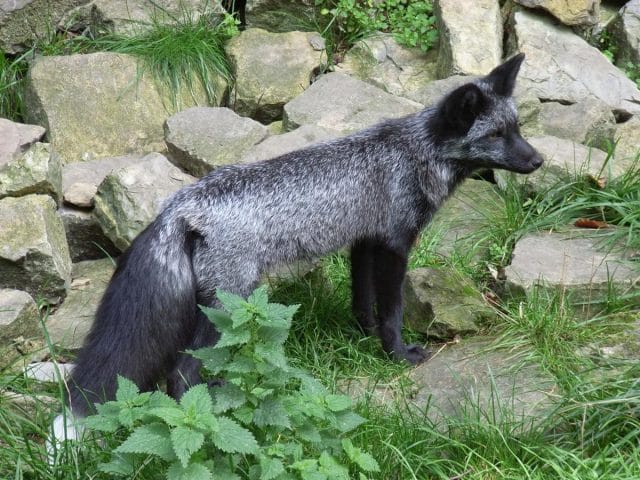
The experiment is actually still ongoing — the next step of course being to try to test and breed the foxes for trainability. Although funding is scarce, they’re able to subsidize the costs of operation by selling some of the foxes as pets.
A Breed Apart
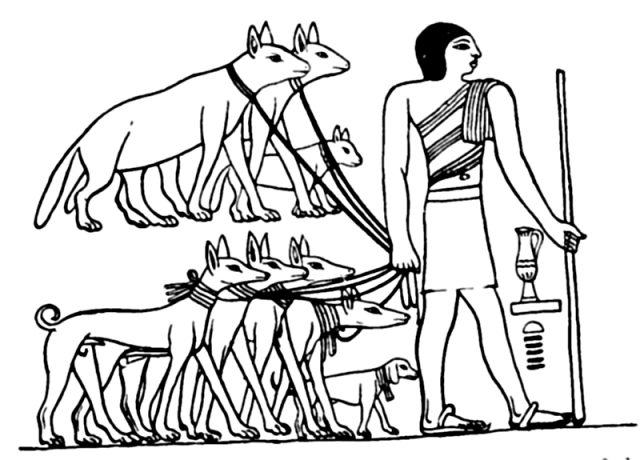
An Egyptian tomb painting depicting tesem dogs (bottom left)
As canines domesticated, they also started to take on different shapes, colors and sizes. Different traits emerged in different climates, environments, and cultures. Humans migrated and adapted to new parts of the world, and their dogs went and adapted with them. These landrace dogs were the initial branches of the vast and mysterious phylogenetic tree the leaves of which are all of today’s dog breeds — from chihuahuas to poodles to huskies.
As time went on, civilization developed, and the role of individuals within society grew more specialized. The roles and forms of dogs specialized, too. Much like many have last names that describe the profession of a distant ancestor (“Shoemaker”, “Baker”, “Cotter”, “Carpenter”), the names of today’s dog types describe what their ancestors did: Sheepdogs and cattle dogs helped ranchers round up their livestock. Hounds helped hunt. Rat terriers were bred to terrorize rats. “Dachshunds,” which means “badger hounds” in German, were bred to hunt burrowing prey — hence the long bodies and short legs.
For one reason or another, many of these dog breeds went extinct. Dog breed extinction is a special kind of extinction. In some ways it’s more similar to a language going extinct than a species. When wild animals go extinct, it’s often due to the disappearance or destruction of their natural habitat. A domestic dogs’ natural habitat is human society. That makes individual domestic dog breeds cultural and anthropological artifacts.
For some extinct breeds — like the Egyptian Tesem, or the Greco-Roman Molossus — the very civilizations that stewarded their lineages were wiped off the map. Other dog breeds went extinct for more economic reasons: they became professionally obsolete.
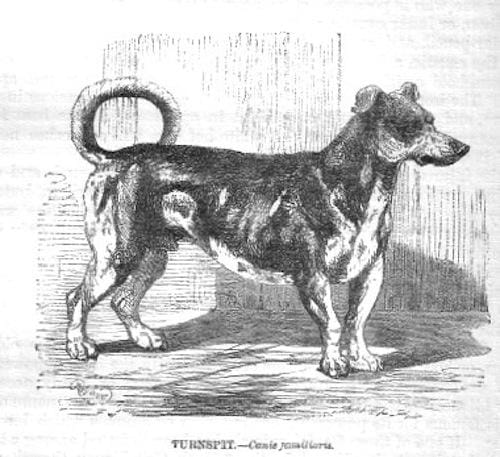
One such dog is the turnspit. Tiny and industrious, turnspits were “essential” to any large 16th Century British kitchen. They were bred to run in a hamster wheel, which was connected by a system of gears or pulleys to the axle of a spit-roast over a fire. The dog ran and ran, and the roast gently rotated, to cook evenly on all sides:
“Turnspit dogs were viewed as kitchen utensils, as pieces of machinery rather than as dogs,” says [author Jan] Bondeson. “The roar of the fire. The clanking of the spit. The patter from the little dog’s feet. The wheels were put up quite high on the wall, far from the fire in order for the dogs not to overheat and faint.”
Bondeson also says that families would bring their turnspits to church on Sundays “because the dogs were useful as footwarmers.” If the turnspit wasn’t running fast enough on the job, you could throw a hot coal into its wheel to really light a fire under it, so to speak.
In the 1850s, the use of turnspits in large commercial kitchens in America inspired the foundation of the Society for the Prevention of Cruelty to Animals (SPCA). But turnspits were already a dying breed by then, because people could afford machines to turn their spit. Bondeson says just owning a turnspit became a “stigma of poverty.” The dogs, who were bred to do nothing but run in place for hours on end, weren’t particularly cute or companionable, so people stopped breeding them. The Industrial Revolution liberated these poor creatures right out of existence.
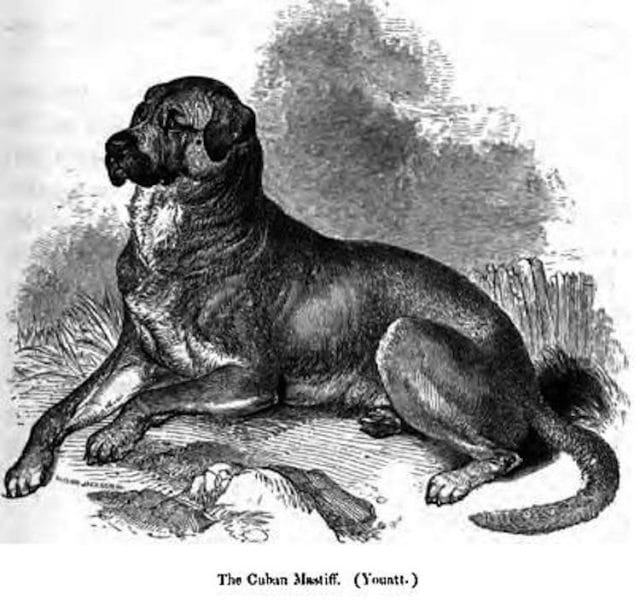
Another, rather dark example of an economically motivated extinction is the Dogo Cubano. A large and mean-looking dog, the Dogo Cubano was bred from fighting dogs and hounds for an express purpose: chasing runaway slaves. When slavery was abolished, there was no longer an economic reason to maintain the breed.
Bulldogs: an Early Modern Breed
You might be kind of glad turnspits and Dogo Cubanos aren’t around anymore. If they were, you’d be reminded of the horrible conditions they were bred for whenever they walked by. Unfortunately, you don’t get off that easy. Guess why bulldogs are called bull dogs.
Bulldogs were bred for the sport of bull-baiting, which was popular in the 17th-19th centuries. Bull-baiting isn’t a sport like tennis is a sport. Bull-baiting is a sport more like the Thunderdome in Mad Max is a “sport.” One bull would take on several dogs, usually in serial. The dogs were trained specifically to get close enough to bite down on the bull’s nose and immobilize it. The bull was usually tethered, but perfectly capable of trampling dogs underfoot, or gorging and tossing them with its horns. As you can imagine, this worked out pretty badly for every animal involved.
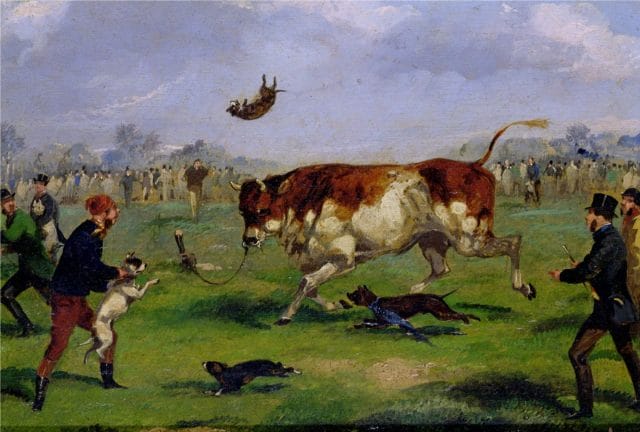
The first bulldogs evolved as a result of breeding the best bull-baiters. But they didn’t quite look like the jowly little gremlins waddling around the world today. Can you imagine any bulldog you’ve ever met taking on a bull?
In 1835, the UK passed the Cruelty to Animals Act, which declared bull-baiting (and bear-baiting, and lion-baiting, which are what they sound like) illegal. Bulldogs were out of a job.
For a while, it seemed like bulldogs would go the way of the turnspit — but they didn’t. Why they didn’t explains why, today, we have hundreds of very strange and not particularly utilitarian dog breeds.
The bulldog was exiting his functional heyday just as a new fad was taking hold of Great Britain. Queen Victoria ascended to the throne in 1837. She was 18-years-old and had many small dogs upon which she doted (including a small stable of Skye terriers). Being queen, she was quite the trend setter, and soon everybody had taken up the pastime of “dog fancy.”
The Victorian dog fancy fad was not just about owning dogs, but also breeding them. The breeding programs of the British leisure class weren’t selecting for the best herders, or the best sled dogs, or the best rat-catchers. They were selecting dogs that would turn heads, inspire envy, and look best as familiars in high-class portraiture. All of a sudden, thousands of people were breeding dogs as ornamental luxury items.
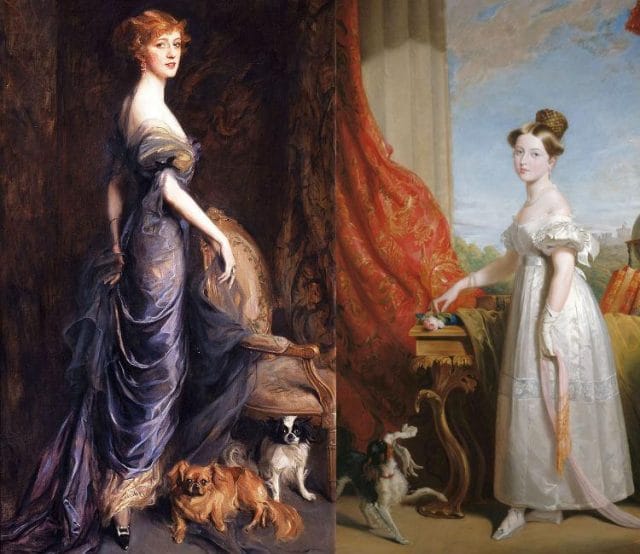
A 1915 portrait of a woman and her pets (left), and a 1833 portrait of then-Princess Victoria and her beloved spaniel “Dash” (right)
This attitude towards dog breeding wasn’t entirely new. Ornamental dogs had been used as status symbols the world over for centuries. But in the Victorian Era, the market for ornamental dogs exploded. Shrewd breeders of bull-baiting bulldogs started to breed and market their stock as companion dogs instead of vicious fighters.
Over a few decades the bulldog’s fearsome strength was replaced with the exaggerated appearance of strength and ferocity. The new generation bulldogs had impractically broad shoulders, accented by tiny rear legs, and squashed faces. This rebranding in some sense “saved” the breed, but by modern standards it was transformed into a different breed entirely, or rather, several different breeds.
This is also when the modern concept of a dog breed emerged, as a way to structure breeding programs. Somebody would show up on the promenade with an exotic-looking dog, and then label it with a breed name: “Check out my new Dalmatian!” Other owners of these breeds would say: “Wait a minute, there’s no way you can call that thing a Dalmatian, this is a Dalmatian.” The dog in question might be a quarter the size of most specimens in the breed, or have a curlier coat, or stockier limbs. But dog breeds had been bred for millennia to perform a function, not with a particular form in mind. None of them had strict aesthetic definitions. This made disagreements about breed membership highly subjective and completely intractable.
Finally people started getting together to agree upon, and put down in writing, exactly what makes a dog a dog. To be more specific: what makes a schnauzer a schnauzer, a corgi a corgi, a bulldog a bulldog. These clubs — called kennel clubs — held competitions to showcase the best exemplars of each breed.
Because they didn’t have modern genetic technology, the criteria were always externally observable. Does the dog look a certain way, act a certain way, walk a certain way? Some of these qualifications were based on the breed’s history. For example, the American water spaniel standard says, ”It is important to have undercoat to provide sufficient density to be of protection against weather, water or punishing cover, yet not too coarse or too soft.”
Pedigree also became much more important. A dog with a documented ancestry was much more valuable to a breeder. An exemplary stud might have a family history of “undesirable” unexpressed traits. Maybe that pug is actually a quarter pomeranian and some of her next litter are going to have long fur, etc.
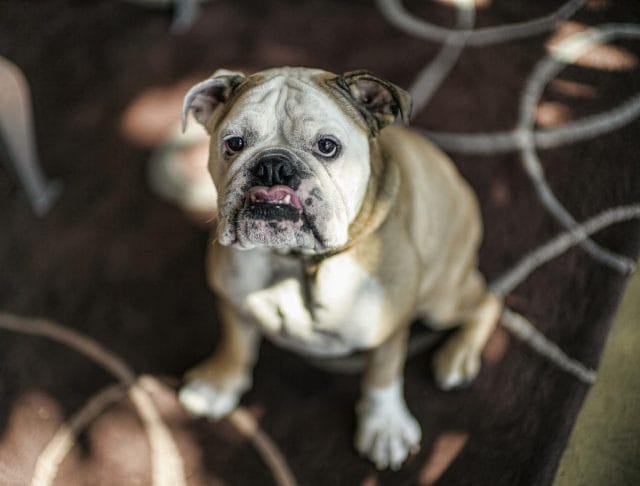
An American bulldog named “Spike”; Source: Christopher Michel
It used to be that if a dog could bull-bait, he was a bulldog. None of the new bulldogs would make good bull-baiters. The “toy bulldog” evolved, and the “English bulldog” and the “French bulldog.” This is how the American Kennel Club’s breed standard defines a bulldog:
“The skull should be very large, and in circumference, in front of the ears, should measure at least the height of the dog at the shoulders. Viewed from the front, it should appear very high from the corner of the lower jaw to the apex of the skull, and also very broad and square.
[…]
Shoulders – The shoulders should be muscular, very heavy, widespread and slanting outward, giving stability and great power. Forelegs – The forelegs should be short, very stout, straight and muscular, set wide apart, with well developed calves, presenting a bowed outline, but the bones of the legs should not be curved or bandy, nor the feet brought too close together.”
The standard also mentions that a bulldog may be: “brindle, white, red, fawn, fallow or piebald.” An all-black bulldog is “very undesirable”, in the eyes of the American Kennel Club.
As you can see, kennel clubs did not solve the problem of standards being arbitrary nonsense. But it did create a relatively stable infrastructure through which these breeds stayed separate. The professional roles that originally created dog breeds have all but disappeared, but a purebred dog is still adapted to a certain kind of “human society”: the society of people who care about preserving purebred dogs. These clubs still exist today, and still put on shows. Today, there are more than 400 internationally recognized living dog breeds.
The Modern, Post-Functional Dog Breed

Behavior and temperment measures for the 10 most popular dog breeds; Source: Ghirlanda et. al.
Nowadays, the data suggests that dog popularity is completely divorced from functionality. In an article in PLoS One, researchers looked for a correlation between dog breed popularity and various useful or harmful traits.
The authors of the paper saw a modern “functional” dog as a companionable dog. Some of the traits they looked at were: trainability, longevity, aggressiveness towards its owner, aggressiveness towards strangers, aggressiveness toward other dogs, a propensity to chase. They found:
A breed’s overall popularity, fluctuations in popularity, and rates of increase and decrease around popularity peaks show typically no correlation with these breed characteristics.
The only exception that they found was that popular breeds tend to be less healthy, in that they, “suffer from more inherited disorders.” This is probably a side effect over breeding. Rigorous breeding programs tend to limit reproduction to homogenous gene pools (no black bulldogs). They have also been criticized for focusing on aesthetics more than health.
Another study found that the popularity of dog breeds was remarkably easy to model as “random drift” governed by the following assumption:
Individuals, confronted with many different choices, simply copy other individuals rather than make ‘optimal’ or ‘rational’ decisions.
If the most popular breeds were also the best breeds, that would manifest as an ‘optimal’ or ‘rational’ cultural pattern. Random drift is more typical of fashion trends. They modeled dog breed popularity — as measured by new registrations with the American Kennel Club — over the past 50 years, and found a few exceptions to their rule that supported their fashion hypothesis.
“For example,” the authors wrote, “after the release of the 1985 version of the Disney movie 101 Dalmatians, new Dalmatian registrations increased 6.2-fold, from 6,880 registrations in 1985 to 42,816 registrations in 1993, followed by a precipitous fall to 4,652 registrations 6 years later.”
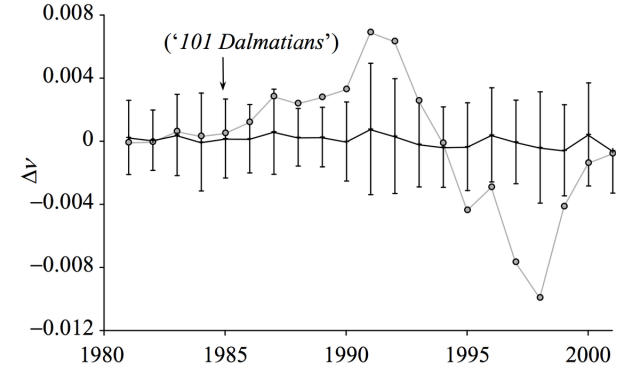
Yearly change in the number of dogs in each breed — Black: average across all breeds, Grey: Dalmatians; Source: Hertzog et. al.
This is all well and good, unless you’re the scion of an unpopular breed. Unpopularity in a fashion-driven market could mean extinction, because it means there’s no market to support continued breeding. And it turns out, with more than 400 internationally-recognized breeds out there, most breeds are pretty unpopular.
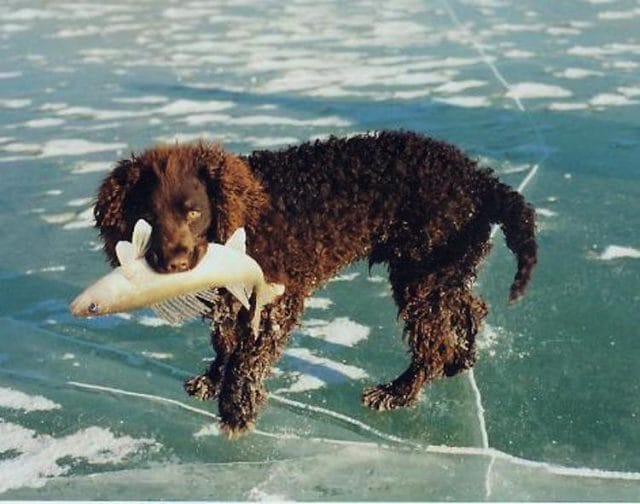
The American Water spaniel is another breed whose popularity is waning; (ranked 160/184)
According to an analysis by Stanley Coren, the 10 most popular breeds account for more than half of the American Kennel Society’s purebred registrations: Labrador Retriever, German Shepherd Dog, Golden Retriever, Beagle, English Bulldog, Boxer, Dachshund, Poodle, Shih Tzu, Yorkshire Terrier. The 50 least popular breeds account for just 1.2% of registered dogs.
Perhaps worse than regular extinction, to a breeder, is for a breed’s more idiosyncratic characteristics to get bred away. From the American Kennel Society:
“It is when we stray from the original functional type to a preference for some fad or fashion that the preservation of the true breeds becomes threatened. For the farther the dogs get from their original and historical functions, the more vital it is to protect the very characteristics that caused that breed to evolve and develop in the first place.”
On Wikipedia’s list of extinct dog breeds, you can find plenty of dogs that disappeared simply because of economic reasons before the Victorian Era. But you can find many more that went extinct in the 20th century because fashionable interest in them dried up. These were either subsumed into new breeds, or their numbers dwindled so low, and they were so inbred, they were wiped out by disease.
***
Dog breeds as we know them are the product of a bizarre Victorian fad that have survived — literally — into the present day. They are an example of what happens when the caprices of human fashion get their hands on another species’ genetics.
While new breeds are still being developed, others are slowly disappearing. The extinction of these domestic breeds might not be so bad a thing, as they were never adapted to a “wild” of any kind. Many of them were adapted to a human society that wanted them, and arbitrarily wanted them to be a certain height, weight, and color. On the other hand, maybe these breeds ought to be preserved as testaments to human and canine achievement, and as specimens of the cultures that bred them.
However you feel, one thing is for sure: if you have a soft spot for Skye terriers, you should appreciate them now. In another 50 years, there might be none left.
This post was written by Rosie Cima; you can follow her on Twitter here. To get occasional notifications when we write blog posts, please sign up for our email list




